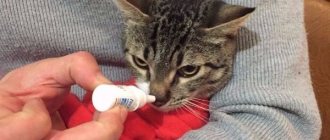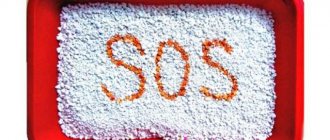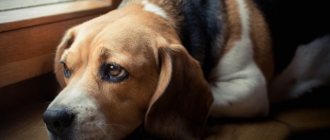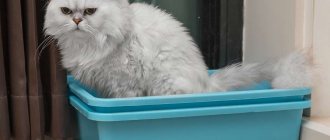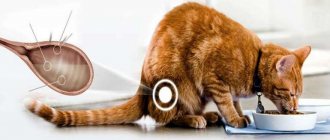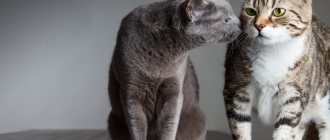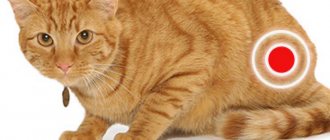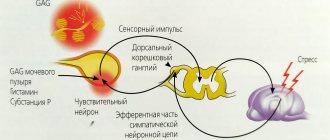In cats, as in people, atony refers to dysfunction of the striated or smooth muscles of organs, including the bladder. Simply put, the animal is unable to control urination, which causes a lot of inconvenience for the owner and pain for the pet itself. Fortunately, bladder atony in cats can be successfully treated without relapse with proper care and prevention. Below we will tell you how to recognize signs of atony in a cat, what factors cause this disease, as well as treatment and preventive measures.
Bladder atony in a cat: symptoms and treatment
Features of the cat's bladder
How is it arranged?
The location of the internal organ in a kitten and an adult is slightly different than in a person, and its fullness also differs significantly. The urea has several layers, which differ in individual characteristics:
- Outer side. The membrane contains connective tissue, under which smooth muscles are located, which ensure the pushing of urine and the urge to excrete it.
- Submucosal tissues. They are a complex membrane that has highly elastic fibers and helps the wall maintain the cat’s bladder in good shape.
- Mucous membrane. Its location is in the cavity of the organ, which makes it possible to stretch and return to normal when it is full. And also in this area a special secret is produced that protects the urea from the negative effects of pathogenic microflora.
Veterinarians focus the attention of cat owners on the fact that although the bladder has a less complex structure than other vital internal organs, even if it is slightly damaged and untreated, unpleasant consequences are possible that threaten the health and life of the pet.
Main functions
Overfilling an organ with urine negatively affects the functioning of other systems of the animal’s body. A cat’s bladder is an important organ, and if its functioning is disrupted, deviations in the functioning of many body structures can occur. The urethra in kittens acts as a reservoir in which urine accumulates until it is excreted through the urethra. When its dysfunction is impaired, excessive filling of the bladder occurs, which is why urine is not excreted on time, stretches the walls and has a negative effect on the kidneys and other structures of the urinary system.
Why is it necessary to eliminate the cause of the disease?
One of the symptoms of bladder or kidney disease is fluid retention . Mostly cats suffer from such phenomena. For example, urolithiasis mainly occurs in cats, since the urethra in cats is much wider than in cats. Neutered pets suffer from these ailments more than others.
They don't get all the hormones, and without quality nutrition and vitamins, they become weaker. Be sure to limit neutered animals from fish products, as they can cause an exacerbation.
ATTENTION! If your cat has kidney stones, give him the medicine "CatErvin". Thanks to the pleasant smell, animals will happily absorb these drops. According to the recommendation, the product should be given to the cat for prevention once every 3-4 months. It has diuretic properties, destroys small stones and sand itself.
To rid your pet of kidney stones, buy food for neutered cats that is specially marked. Infectious and cold pathologies can also cause fluid retention. Cats, especially those accustomed to a warm home, should not become overcooled.
To avoid such difficulties, you need high-quality care, proper nutrition and preventive measures. When you see that your pet cannot urinate, try to understand how long it has been since he urinated. Healthy animals walk three times a day, kittens up to four times. Cats can “accumulate” liquid in themselves, so concentrated urine is considered normal.
If a cat cannot defecate for several days, this is a very dangerous problem, since the body can be poisoned by urea. Manifestations of poisoning: lethargy, apathetic mood, lack of appetite.
How can you tell if your cat's bladder is full? This can be done quickly. Place the animal on its paws, clasp it with both hands so that your thumbs are located on the cat's rump, and use the remaining fingers to feel and palpate the belly. If your cat is constantly running to the toilet and squeezing out little things all the time, this may be enough to get rid of the poisoning.
Clinical signs
What are the symptoms of this disease? Firstly, the animal cannot go to the toilet for a long time, constantly sitting on the tray. Meanwhile, the cat begins to run “to the potty” more and more often (due to the constantly irritated mucous membrane of the urethra). Gradually, the process of urination becomes extremely painful; the animal literally “screams obscenities” while trying to urinate. In those droplets of urine that the unfortunate cat managed to “express”, you can see blood, pus, and other evidence of a developed inflammatory process in his body. If you do not contact a veterinarian, the animal's condition will quickly deteriorate. An increase in general body temperature is possible, the cat’s appetite completely disappears, but excessive thirst appears. He will lap up the water from the bowl with noise and squelching, only to rush back to his tray within a few seconds.
Symptoms of serious intoxication of the body gradually appear: a strong smell of ammonia or even acetone comes from the skin and secretions of the animal, and copious amounts of saliva are observed. The cat is weakening before our eyes, preferring to hide in the most secluded, dark corners. It is important to say here that all of the above is so clearly manifested only in the case of acute urethritis, when the patency of the urinary canal is impaired. Fortunately, such severe urethritis in cats does not always occur. Sometimes the inflammation becomes chronic, and therefore the cat can urinate, as a result of which such severe intoxication does not develop. But you should still be wary of the fact that he often visits the tray, where the pet sits for a very long time.
Symptoms
When atony of the intestines or stomach in animals, disturbances in digestive processes are noted. Pathology manifests itself:
- frequent debilitating vomiting;
- loss of appetite, refusal of food and favorite treats;
- lethargy, decreased activity, weakness;
- loss of body weight;
- unstable stool (diarrhea, constipation);
- acute pain on palpation of the abdomen, tight tummy;
- deterioration of coat condition.
Some cats have an increased appetite, but at the same time the daily number of bowel movements decreases, which can cause severe intoxication of the body. The act of defecation is difficult, cats experience pain when visiting the litter box. Mucous membranes are icteric, anemic.
We suggest you read: What to do if your cat scratches its neck until it bleeds
With atony of the bladder, the symptoms are mainly manifested by difficulty urinating. There may be flakes, blood clots, and bloody threads in the urine. The rest of the symptoms are the same as with atony of the gastrointestinal tract muscles.
Diseases provoked by the innervation of an organ in a state filled and empty of urine
Excess of innervation leads to a neurogenic bladder. This disease indicates the beginning of incorrect functioning of the urinary canals. Urinary tract problems can be acquired during life or can be a congenital disorder related to the nerves.
The connection between the bladder and the nervous system is very important for a person to live a full life. When the disease occurs, the patient’s urinary canals atrophy, or they work too actively. Such disorders can manifest themselves with injuries or parallel diseases (pathologies of the anterior part of the central nervous system, multiple sclerosis, stroke, parkinsonism, Alzheimer's disease, spinal cord lesions). The patient completely loses control over the process of removing urine from the body.
In turn, the neurogenicity of the muscular organ is divided into hyperactive and hypoactive types of disease development.
We get tested
It is better to take any tests in the morning on an empty stomach. The only exceptions are emergency cases, if the pet suddenly becomes ill and needs emergency hospitalization.
Donating blood is easy: the veterinary nurse will find a vein and take a portion of blood without any problems.
Many owners are concerned about the question of how to collect urine from a cat for analysis. To do this, prepare a tray: remove the filling, wash it, and pour boiling water over it. There is no need to use aggressive detergents such as bleach. Even if the pet doesn’t like the empty tray, sooner or later he will go into it. Drain the liquid into a jar and take it to the clinic.
If your pet does not have time to reach the tray, put a diaper on it. Later, squeeze the diaper into a jar for analysis. But this option is not very good, since the composition of the diaper can change the composition of the urine.
Another option: go to the clinic. To take the test, the doctor will insert a catheter. Catheterization is not very comfortable for the furry patient, but is completely painless. The most accurate and pure material is considered to be obtained by a-puncture of the bladder. The needle is inserted through the abdomen into the bladder, then the required amount of liquid is sucked out. The procedure is easily tolerated by animals; anesthesia or freezing is not required.
Diagnostic methods
In case of pathologies of the urinary system, the animal must undergo an ultrasound examination. Even if the owner knows where the pet’s bladder is and can palpate it himself, it is still recommended to consult a veterinarian. At home, it is possible to determine the presence of a disorder, but it is difficult to establish its cause and choose the right treatment. The specialist needs to check the general condition of the animal and collect a detailed history. To make a diagnosis, a number of manipulations are performed:
- laboratory testing of urine;
- general and biochemical blood test;
- ultrasound examination of all structures of the urinary system;
- bacteriological culture of urine for sensitivity to antibacterial agents;
- cystoscopy if it is impossible to determine the source of the disorder in the bladder by other means.
Veterinary clinic of Dr. Shubin
Urinary retention due to inadequate detrusor contraction
Bladder atony may be primary (neurogenic) or secondary (non-neurogenic) to increased resistance to urine output (mechanical or functional).
Structural or mechanical abnormalities of the detrusor can also lead to urinary retention, but this is extremely rare and should be found in separate sources. Chronic inflammation or infection of the bladder wall, over time, leads to the replacement of smooth muscle with non-contractile fibrous tissue, leading to the formation of a weakly distensible bladder with reduced ability to contract. Typically, detrusor fibrosis is accompanied by signs associated with poor bladder distensibility: decreased urine volume and increased frequency of urination.
Neurogenic causes of detrusor weakness
Most emission disorders develop due to inadequate contraction of the detrusor muscle, secondary to neurological diseases, most often involving lesions at the level of the spinal cord. Although lesions of the cerebral cortex or cerebellum have the potential to impair the onset or alter the pattern of urinary emission, brain diseases are more likely to cause clinical signs associated with storage dysfunction than with emission dysfunction. Spinal cord lesions accompanied by upper or lower motor neuron signs often lead to urinary problems (see below).
Lower motor neuron lesions (LMN)
The lower motor neuron, in urinary retention in cats and dogs, extends from the level of L5 to the lower urinary tract (sacral S1-S3, pelvic nerves, pelvic plexus, descending nerves). Dysfunction of this part of the peripheral nervous system is usually accompanied by a decrease in detrusor tone and hyporeflexia of the internal urethral sphincter (sometimes the tone is preserved). Other signs of lower motor neuron damage include decreased perineal reflexes and anal and tail tone.
When examining a patient with LDN disorders, a decrease or absence of perineal reflexes and a distended bladder are usually revealed, the manual emptying of which often does not cause significant resistance. Sometimes emptying the bladder is difficult because... The internal urethral sphincter is innervated by the hypogastric nerve. There are no attempts to urinate independently, leakage of urine is typical (overflow incontinence), and skin lesions (urinary burns) may form. Due to the fact that the innervation of the internal urethral sphincter comes from the hypogastric nerve, its tone can be maintained and fixed over time.
Common causes of lower motor neuron lesions include cauda equina syndrome, sacroiliac dislocation, intervertebral disc disease, sacrocaudal separation or fractures (tail avulsion), birth defects (ex. Manx cats), and neoplasia. Treatment of complete detrusor atony and sphincter areflexia is often unsuccessful, despite the possibility of correcting the underlying causes.
In an attempt to treat this form of urinary retention, parasympathomimetics (eg bethanechol) can be prescribed; if partial innervation is preserved, it increases the force of detrusor contraction, but the drug will not have an effect in the absence of pelvic nerve function. The patient can receive treatment at home, through aseptic catheterization of the bladder (preferred in males) or manual emptying (in females and cats), the frequency of these manipulations should be 3-4 times a day. In addition, perineal toilet is important to prevent inflammation of the folds. During treatment, periodic monitoring is carried out for the development of lower urinary tract infection, and appropriate treatment is prescribed if necessary.
Dysautonomia
Primary dysautonomia in cats and dogs is quite rare; a secondary form of dysautonomia is more often observed with neurogenic lesions, namely idiopathic neurodegenerative disorders of the sympathetic and parasympathetic nervous system, caused by chromatolytic degeneration of neurons in the autonomic ganglia. Isolated cases are constantly described throughout the world, almost exclusively in dogs.
Direct dysfunction of urinary emission is characterized mainly by overflow incontinence against the background of atony of the bladder and arephelxia of the urethral sphincter, but dysautonomia is characterized by the presence of other signs of dysfunction of the autonomic nervous system (eg dilated pupils, no response to light, xerostomia, prolapse of the third eyelid, lack of anal tone , regurgitation and/or vomiting). The results of clinical and pharmacological tests for dysautonomia allow a high-grade lifetime diagnosis to be made.
Dysautonomia often leads to the development of multisystem pathology with clinically devastating results; when the gastrointestinal tract is affected (eg ileus, megaesophagus), treatment is rarely successful. If signs of dysautonomia are largely limited to the urinary tract, satisfactory treatment results may be obtained with parasympathomimetic drugs and bladder emptying (manual or intermittent catheterization).
Myogenic causes of detrusor weakness
Detrusor atony due to bladder overdistension
Any acute or chronic overdistension of the bladder can impair detrusor function. The essence of the problem is that the detrusor consists of groups of smooth muscles with a close relationship between themselves and nerve endings. Significant stretching disrupts the function of both the muscle itself and the connections, which is accompanied by disruption of neuromuscular transmission and weakness (up to complete absence) of bladder contractions.
In case of acute obstruction of urination, cats and dogs are presented for initial consultation due to stranguria, anuria and overflow incontinence; upon physical examination of such animals, a significant enlargement of the bladder and laxity of its walls are determined. In animals with hyperacute obstruction, the bladder is smaller, more dense, and typically painful. After proper urine drainage is restored (usually through a catheter), the bladder does not collapse completely and remains distended. Perineal reflexes remain intact, but detrusor contractions are reduced or absent.
In such cases, after restoration of normal urine outflow, it may be necessary to install a urinary catheter for various periods of time (from 72 hours to 14 days) with a closed urine collection system; these manipulations help maintain the bladder in a collapsed state and create conditions for the restoration of the affected muscle and return its functions. Chronic atony and bladder distension are somewhat more difficult to treat.
Another form of detrusor atony with overdistension of the bladder is observed after various pathologies not related to the urinary tract, which prevent the animal from taking a position for normal urination and can lead to urinary retention. Examples of the causes of this form of urinary retention include such factors as: hospitalization, forced lying position, recovery period immediately after various surgical interventions, and other painful conditions. In such cases, short-term placement of a urinary catheter or intermittent catheterization usually resolves the problem; pharmacological agents are rarely used. Prognosis depends on the causes and reversibility of the underlying conditions, but is often favorable for restoration of detrusor function in the initial stages. The chronicity of the process reduces the likelihood of a complete functional return of urination function.
Pharmacological causes of urinary retention
Urinary retention has been described in dogs following systemic administration of several classes of drugs, including tricyclic antidepressants, anticholinergics, opioids, and calcium channel blockers. Effects on the genitourinary system are usually reversible and end after the drug wears off. In some cases, inserting a catheter may help solve the problem.
Urinary retention with increased resistance to urine outflow
Anatomical/mechanical obstruction
Mechanical obstruction of the outflow of urine occurs quite often in cats and dogs; the most common causes are urolithiasis (urolithiasis), an obstructive form of feline idiopathic cystitis, or neoplasms. Animals feel the bladder full, make unsuccessful attempts to urinate by adopting a posture, the stream of urine is either thin and intermittent, or is completely absent. Attempts to manually empty the bladder are also unsuccessful, and catheterization is characterized by significant difficulties. Perineal reflexes are preserved.
Myogenic causes of increased resistance to urine outflow
Functional obstruction of urine outflow
The term "functional obstruction" describes a condition in which increased sympathetic impulses increase the tone of the urethral sphincter, which prevents the normal flow of urine when attempting to urinate. Functional obstruction may have a neurogenic causative component or develop from direct irritation of the urethra. Excitement produced by ineffective attempts to urinate in the future can further increase sympathetic tone and aggravate the course of the disease. Functional obstruction due to spasm of the urethral muscles most often develops in cats after manipulation of the urethra to relieve mechanical obstruction.
Therapy for functional obstruction involves treating or preventing bladder atony from overdistension by placing a urinary catheter while reducing internal and/or external urethral sphincter tone (as described in the upper motor neuron disorder section). The use of anxylotics (sedatives) may be beneficial in reducing stress levels and thus the impact of sympathetic impulses on the lower urinary tract.
With functional obstruction, the prognosis is variable, but generally favorable in most cases of acute urethral irritation (eg cats with urethral spasm after obstruction).
Functional obstruction of urine outflow, after resolution of mechanical obstruction in cats, develops quite often and therefore deserves a separate discussion. Although most of these cats already have a catheter that is removed at the clinic appointment, resolution of the functional component of the obstruction may require reinsertion of the catheter for a variable period (usually 1-3 additional days). Although there is no evidence-based measure to prevent urethrospasm, the following suggestions may reduce the risk of functional obstruction due to urethral irritation and/or inflammation after resolution of mechanical urethral obstruction.
• When catheterizing cats, use only a soft catheter that does not irritate the urethra (eg silicone, Teflon catheters and soft umbilical feeding tubes for children). Polypropylene catheters cause irritation while maintaining contact with the urethral mucosa. Such catheters can also cause bladder injury when placed in the urethra.
• Consider the use of urethral relaxants while the catheter is in the urethra and after it is removed. Prazosin is a safe and effective urethral smooth muscle relaxant in cats, while diazepam and dantrolet relax skeletal muscles.
• Consider the option of systemic administration of NSAIDs during catheterization (contraindications - acute renal failure).
• Consider anxiolytic and/or anxiolytic medications during and after catheterization. (eg diazepam, acepromazine and amitriptyline). These medications can reduce stress and tension, which reduces sympathetic impulses.
Neurogenic causes: increased resistance to urine outflow
Upper motor neuron disorders (UMN)
Lesions of the VDN develop when the spinal cord is damaged, located between the sacral region and the center of urination of the pons, and there is a reflex contraction of the detrusor with inhibition of sphincter contraction. Patients with VDN disorders often have paresis or paralysis of the hind limbs and are unable to defecate voluntarily. On physical examination, the bladder is usually distended, hard, and difficult to empty. Manual bladder emptying must be done with caution because aggressive attempts may lead to bladder rupture and repeated squeezing may interfere with detrusor recovery. It is preferable to use intermittent aseptic catheterization of the urethra, especially in male dogs, this reduces the risk of urinary injury and leads to its complete emptying.
After a few days or weeks, local spinal reflexes may resolve and allow some urinary activity to occur. Involuntary voiding usually begins when threshold capacity is reached, a phenomenon referred to as the “autonomic bladder reflex.” When bladder autonomy occurs, treatment with manual bladder emptying may be considered, since stimulation of detrusor contraction should now lead to relaxation of the sphincter and the possibility of complete or partial emptying. Autonomous (or reflex) bladder function is rarely observed in dogs, however, it is usually partial in its development, so pharmacological assistance is necessary. Urethral smooth muscle relaxants, such as alpha-agonists (eg prazosin, tamsulosin) and skeletal muscle relaxants (eg baclofen, diazepam, dantrolene) can facilitate complete voiding by relaxing the internal and external urethral sphincter. Residual urine volume should be monitored periodically to assess the effectiveness of treatment.
Detrusor-urethral dyssenergy (reflex dyssenergy)
Dyssenergy – simultaneous contraction of muscles acting in the opposite direction; this disorder is usually associated with simultaneous contraction of the detrusor and urethral sphincter (lack of sphincter relaxation when the detrusor contracts). In dogs, reflex dyssenergy often develops during recovery from spinal cord injury.
In the veterinary literature, detrusor-urethral dyssynergia is usually classified as neurogenic or myogenic, as it may be caused by partial lesions of the reticulospinal tract, lesions cephalad to the caudal mesenteric ganglion, or idiopathic in origin. In humane practice, the term usually implies neurogenic dyssenergy, defined by specific neurological and urodynamic criteria.
The state of dyssynergia leads to the onset of detrusor contraction, accompanied by simultaneous contraction of the urethral sphincters (external, internal or both), causing the bladder to contract against the markedly increased pressure in the urethra. Idiopathic dyssynergia is also referred to as “functional urethral obstruction”, is more common in males and may be worsened by arousal or stress (psychological, physical or sexual), probably due to increased sympathetic innervation. Dogs with dyssynergy often begin the act of urinating (an initial stream of urine is formed) with a quick interruption; they can repeat this behavior several times until the end of attempts to urinate. Residual urine volume is less than 10 ml.
Documentation of dyssenergy is difficult in clinical practice because it requires electromyographic assessment of detrusor and sphincter muscle activity during voiding. Clinical diagnosis can be made based on the animal's predisposition, physical examination, urine output pattern, and exclusion of mechanical obstruction. Urethral pressure profilometry can confirm increased outlet resistance and can help localize the area of abnormal resistance (external sphincter, internal sphincter, or both).
Treatment of dyssynergia is based on reducing the tone of the urethral sphincters (as in the section of upper motor neuron disorders) and, if necessary, restoring detrusor function.
Symptoms of urethral obstruction in cats.
Signs of a urethral blockage usually include:
- Repeated unsuccessful attempts to urinate;
- Screaming and discomfort when urinating;
- Increased agitation, possible vomiting;
Depending on the underlying cause, there may be other changes that accompany the urination process that develop over several days, such as increased frequency of urination, straining, discomfort, or even some blood in the urine.
If urethral obstruction is suspected, the cat should be immediately taken to the veterinarian, as this disease is life-threatening.
What to do and how to deal with the problem?
A constantly increased bladder volume requires special attention from cat owners, as this may be the first sign of the development of the disease. Only a veterinarian can select the appropriate treatment for the disease. Some people try to cope with the inflammatory reaction in the cat's bladder using herbal infusions and other medications used at their own discretion. But self-medication of cystitis in pets, as in people, can lead to serious consequences. It is possible to cope with the problem with the help of veterinary drugs indicated in the table, the dosage of which and the duration of administration are chosen by the doctor.
| Drug group | Name |
| Products with antibacterial effects | "Ceftriaxone" |
| "Cefoperazone" | |
| "Levofloxacin" | |
| "Ciprofloxacin" | |
| Uroseptics to suppress infection in the bladder | "Furazolidone" |
| "Furagin" | |
| Antispasmodics and analgesics | "Analgin" |
| "Papaverine" | |
| "No-shpa" | |
| Droppers in case of general intoxication of the cat's body | Ringer's solution |
| Herbal teas with a diuretic effect | "Stop cystitis" |
Veterinarians recommend treating hemorrhagic inflammation of the bladder in cats with the help of special drugs that stop bleeding. The best representative of the group is “Ditsinon”.
Prevention measures
There are many reasons that cause uncontrolled leakage of urine, so it will not be possible to insure your pet against this phenomenon. However, by performing simple preventive measures, you can prevent some diseases associated with involuntary urine loss:
- The cat's diet should be balanced and include meat, fish, and dairy products. Food from “your own table” is prohibited.
- Do not mix natural food and dry food.
- Use bottled water, not raw water.
- Economy class food should be excluded from the diet.
- Carry out vaccinations and deworming in a timely manner.
- Don't skip routine checkups with your veterinarian.
- Try to protect her from contact with stray animals. After a walk, inspect the animal for injuries or damage to the skin.
- Protect your pet from injury by creating a safe space for him.
If you notice signs of urine leakage, contact a specialist immediately. Treating the disease at the initial stage will avoid complications.

